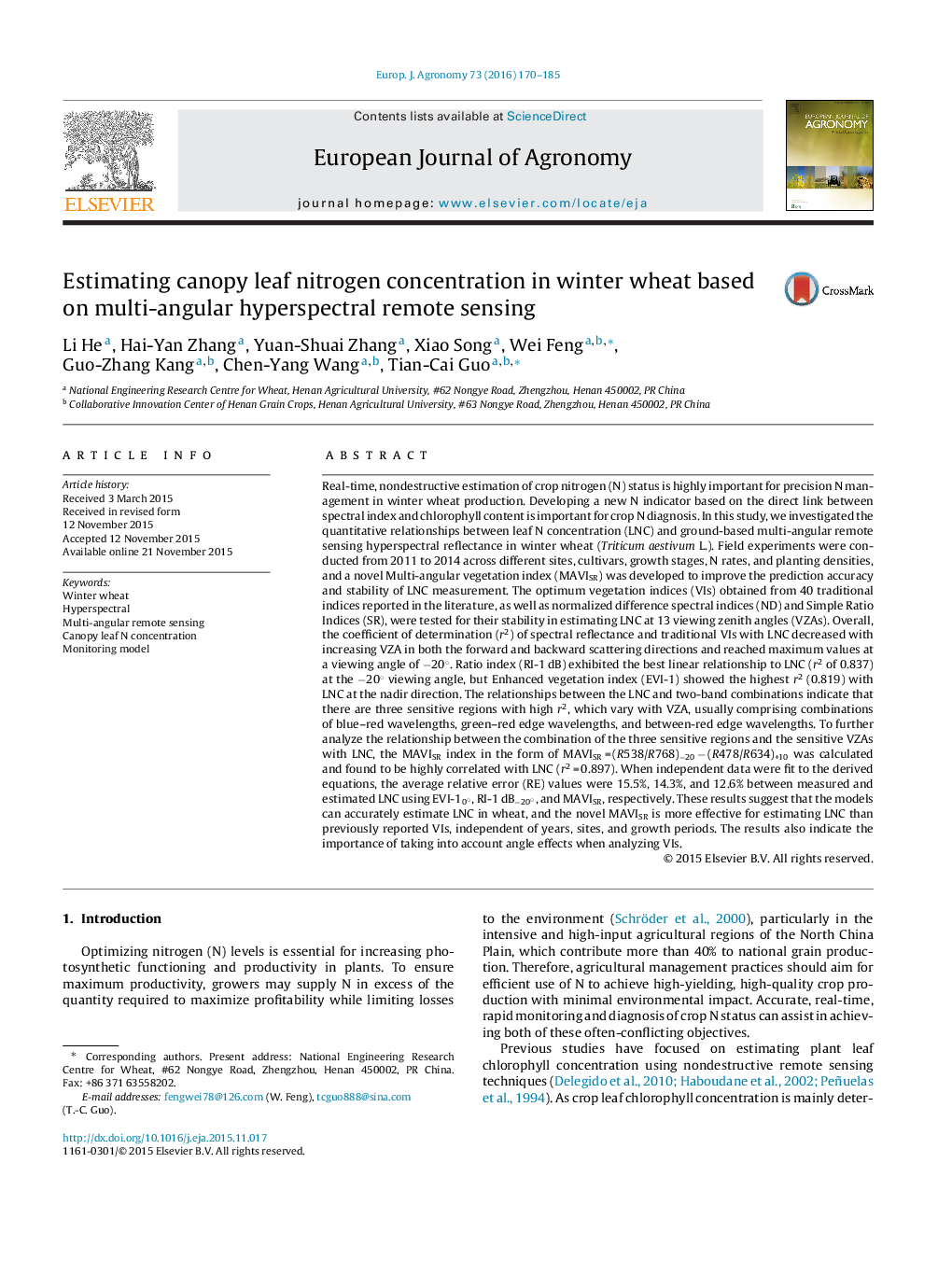| کد مقاله | کد نشریه | سال انتشار | مقاله انگلیسی | نسخه تمام متن |
|---|---|---|---|---|
| 4508813 | 1624452 | 2016 | 16 صفحه PDF | دانلود رایگان |
• Multi-angular vegetation indices (MAVI) for estimating LNC in wheat were developed.
• Optimal wavelengths and viewing zenith angles were determined and characterized.
• These indices were compared with existing traditional indices.
• Our MAVI model improves LNC estimation from remote sensing data by 9.4%.
Real-time, nondestructive estimation of crop nitrogen (N) status is highly important for precision N management in winter wheat production. Developing a new N indicator based on the direct link between spectral index and chlorophyll content is important for crop N diagnosis. In this study, we investigated the quantitative relationships between leaf N concentration (LNC) and ground-based multi-angular remote sensing hyperspectral reflectance in winter wheat (Triticum aestivum L.). Field experiments were conducted from 2011 to 2014 across different sites, cultivars, growth stages, N rates, and planting densities, and a novel Multi-angular vegetation index (MAVISR) was developed to improve the prediction accuracy and stability of LNC measurement. The optimum vegetation indices (VIs) obtained from 40 traditional indices reported in the literature, as well as normalized difference spectral indices (ND) and Simple Ratio Indices (SR), were tested for their stability in estimating LNC at 13 viewing zenith angles (VZAs). Overall, the coefficient of determination (r2) of spectral reflectance and traditional VIs with LNC decreased with increasing VZA in both the forward and backward scattering directions and reached maximum values at a viewing angle of −20°. Ratio index (RI-1 dB) exhibited the best linear relationship to LNC (r2 of 0.837) at the −20° viewing angle, but Enhanced vegetation index (EVI-1) showed the highest r2 (0.819) with LNC at the nadir direction. The relationships between the LNC and two-band combinations indicate that there are three sensitive regions with high r2, which vary with VZA, usually comprising combinations of blue–red wavelengths, green–red edge wavelengths, and between-red edge wavelengths. To further analyze the relationship between the combination of the three sensitive regions and the sensitive VZAs with LNC, the MAVISR index in the form of MAVISR = (R538/R768)−20 − (R478/R634)+10 was calculated and found to be highly correlated with LNC (r2 = 0.897). When independent data were fit to the derived equations, the average relative error (RE) values were 15.5%, 14.3%, and 12.6% between measured and estimated LNC using EVI-10°, RI-1 dB−20°, and MAVISR, respectively. These results suggest that the models can accurately estimate LNC in wheat, and the novel MAVISR is more effective for estimating LNC than previously reported VIs, independent of years, sites, and growth periods. The results also indicate the importance of taking into account angle effects when analyzing VIs.
Journal: European Journal of Agronomy - Volume 73, February 2016, Pages 170–185
